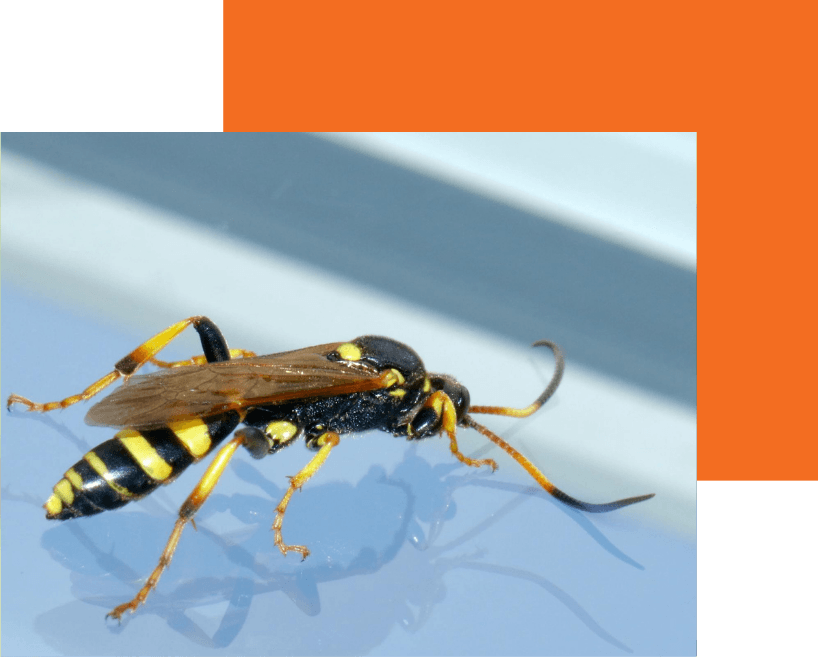Stinging Insects
Carpenter Bees, yellow jackets, and wasps are three common stinging insects found here in Missouri. Most of us may not be aware that two of these insects can cause structural damage. Additionally, the venom from a sting can cause a life-threatening reaction in those with sensitivities.
Carpenter Bees
Carpenter Bees are often mistaken for bumblebees. Bumblebees are larger and appear to be fuzzy. In contrast, Carpenter Bees are smaller and have a black, shiny, hairless upper abdomen. They do not eat wood but burrow through wood forming tunnels, which causes significant damage to the structure of buildings. They are not social insects and prefer to be loners; a series of tunnels is home to just one Carpenter Bee. As other solitary pests set up home in the same structure, the integrity can begin to fail, leading to expensive repairs. Homeowners are usually unaware this damage is actively spreading.
Yellow Jackets
Yellow jackets are infamous for causing perhaps the most painful stings in the insect world. It is quite easy to identify one of these insects because of the vibrant black and yellow banding. Yellow Jackets typically build paper-like nests that hang off of tree branches, building overhangs or porches. It's not uncommon to find them living underground as well. They are aggressive and have no qualms about attacking anything that swats at them or threatens their nest. They'll go to great lengths as territorial fighters stinging multiple times to ward you off.
Wasps
Wasps’ stinging behavior differs. Social wasps are more prone to aggressiveness, and solitary wasps are more docile.
Social Wasps
These include Paper Wasps, Hornets, and Cuckoo Wasps. Social Wasps' nests are paper-like formed with open combs. They are found on overhangs and places like tree branches and cooperatively defend a nest and will not hesitate to attack when threatened.
Solitary Wasps
Solitary Wasps include Mud Daubers and Cicada Killers. They do not live in colonies but rather alone. Mud Daubers build small, short tubes out of mud for their nest. The tubes are often found in the eaves of structures and the undersides of surfaces. Cicada Killers are a very large wasp who can deliver a sting if provoked. These insects burrow in the ground where they nest. Those walking barefoot across grass where Cicada Killers are present may experience an unexpected sting.
Cardinal To The Rescue
Cardinal Insect & Pest Solutions, LLC, are your professionals to effectively manage your stinging insect issues. Attempting to remove nests on your own can be dangerous. The last thing you should do is disturb a nest with a stick or broom. If you or a family member have sensitivities to bee, wasp, or yellow jacket venom, we highly recommend calling us to mitigate the problem immediately. As the "Show Me" state, we will deliver the results you need to get back outside to enjoy the outdoors without these stinging insects. Give us a call today for a free estimate. We are the top-rated pest control company serving the Greater St. Louis area.


